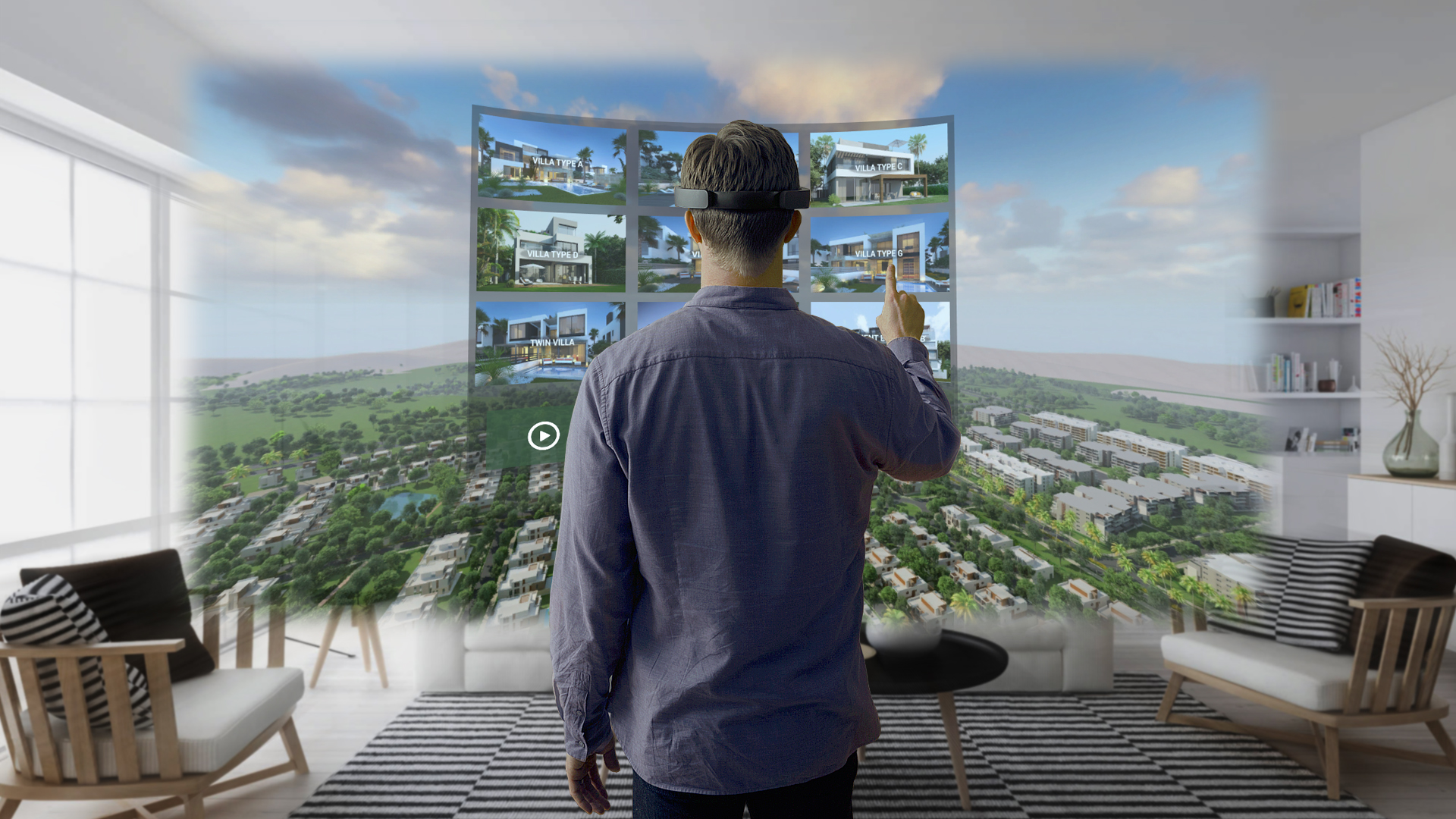
Imagine visiting every corner of your potential dream home without even leaving your bed.
Today, an increasing number of real estate businesses are embracing Virtual Reality (VR) technology to offer a more realistic, engaging and dynamic house-hunting experience for clients.
Virtual tours are empowering consumers to explore a property without the risk of exposure to the COVID-19 virus.
Although property websites have existed for a few years, it’s only in 2020 that the average Indian consumer’s comfort level with online purchases of cars, large appliances and crucially, houses has increased substantially.
The future consumers of the realty market will comprise hyper-connected and tech-savvy millennials. Real estate players must be ready for this by executing robust digital marketing strategies to establish their online presence.
Out with the Old
Before the pandemic hit, buying or leasing a property was an elaborate process involving:
- Discovery through newspaper classifieds or word of mouth and any other form of advertisement,
- Meeting with multiple real estate agents,
- Visiting the site or model flat in person to get a feel for the layout,
- Sorting through stacks of paperwork in the realtor’s office.
This overdrawn discovery process, coupled with the weak marketing ROI, is why traditional sales and marketing methods have now been deemed inefficient.
A rapid move to digital has become imperative to boost real estate discoverability, increase ROI, and create a better overall customer experience.
In fact, according to a survey by the National Association of Realtors, 44% of clients search for properties on sale online first, and 50% actually purchase properties through online search.

In with the New
Disruptive technologies, primarily VR, are already transforming the way we buy and sell properties.
Analysts believe that by embracing VR in their marketing strategies, real estate companies will shorten the customer’s buying journey, enhance discoverability, and transform the house-hunting process.
According to studies, 90% of real estate agencies have joined the technology race to grow their business, get more clients and provide better services to their existing clients. About 1.4 million realtors will use these technologies by 2025.
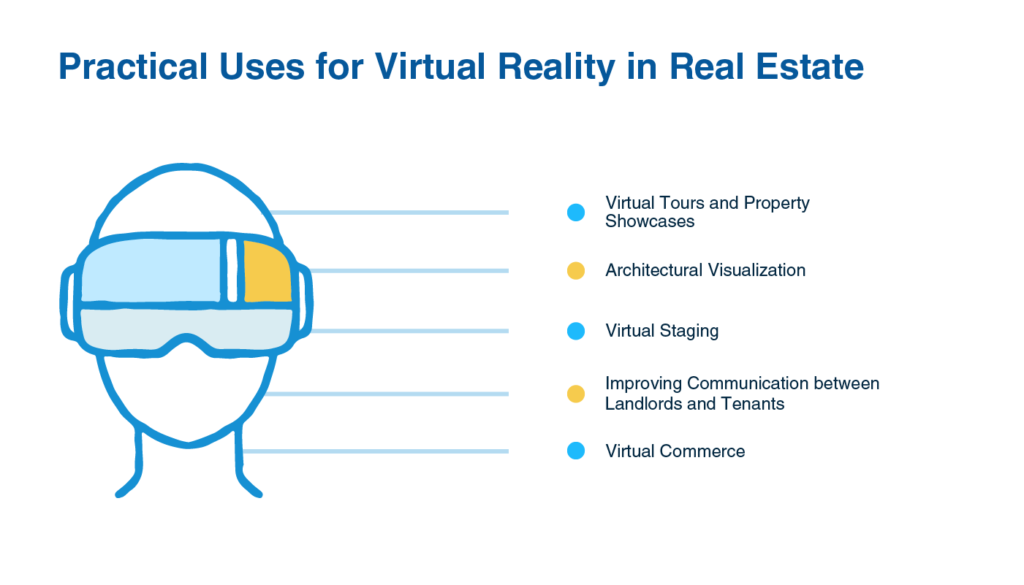
Benefits of VR as a Marketing Tool
The above statistics prove that now is not the time to be left behind in the race. The time to integrate VR capabilities into your advertising strategy is here.
Even if you’re already leveraging VR in your real estate company’s marketing toolkit, here are four benefits you might not yet be aware of:
Enhances Client Experience
VR’s biggest strength is its ability to provide potential clients with a realistic and immersive experience. Real estate marketers can wisely use this strength to their advantage by giving clients a chance to thoroughly explore the property before making their decision.
Also, certain VR tours can even include a variety of multimedia effects, like ambient music, narration and light-and-sound effects. These features add a sense of realism and wonder to the experience and enhance clients’ confidence before they sign on the dotted line.
Curious to glimpse this in action? Check out this video to get a clearer understanding of what a 360 virtual tour experience looks like.
Saves on Time and Cost (for Everyone)
VR tours and guided walkthroughs allow clients to see both the property and the surrounding location in actual time. This reassures them about various deciding factors like road conditions or the neighbourhood’s atmosphere while cutting travel time to zero.
Realtors also save on time and money by doing away with expensive showings and face-to-face meetings.
The main added convenience of shortening the discovery process is that it helps marketers to close deals sooner and immediately increases their ability to serve more clients.
For example, Sobha Realty made great strides by rapidly adapting a robust VR 3D tour experience of their properties, which is conveniently accessible on a mobile application,
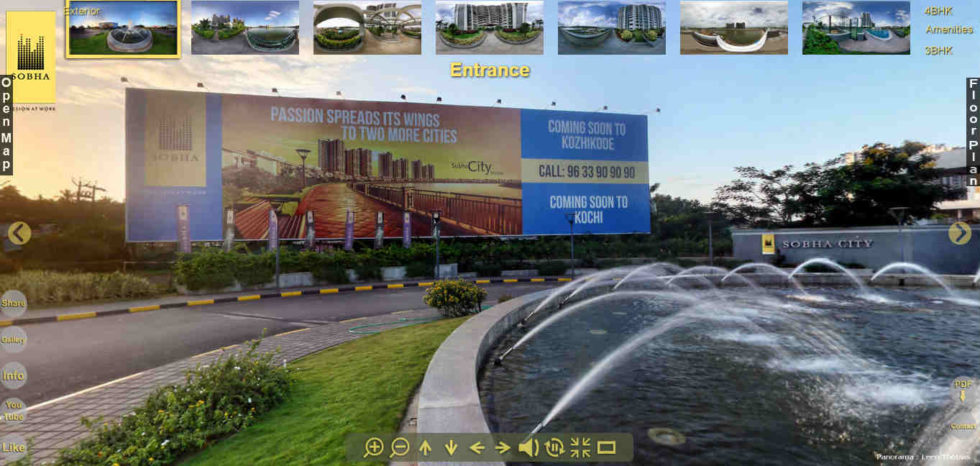
Customization
Unlike physical tours, VR walkthroughs can be customized to appeal to the different tastes of customers, with limited effort.
For example, for more visual clients, the lighting, interior design and zoom features come in handy. For more practical clients, pop-up windows can be personalized showing detailed facts, statistics and measurements of the rooms.
Even the clients can get creative by playing interior decorator: adding preferred furniture, experimenting with the layout and colours of the room and much more. This actually adds an emotional element. Also, it helps them visualize living in that space, which can lead to a potential sale for you.
For example, virtual staging companies like RoOomy have created immersive mobile apps with customizable VR features that allow customers to furnish rooms however they like before they decide to buy.
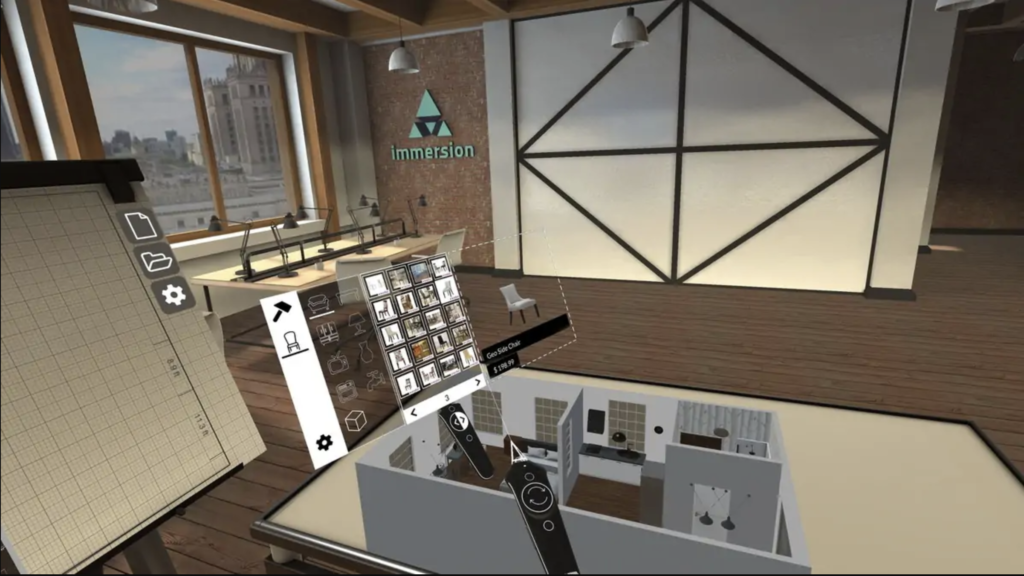
Boosts Brand Exposure and Reputation
Real estate companies that incorporate high-quality VR content in their marketing mix can generate more leads, improve overall customer engagement and bring in more web traffic to their websites and social channels.
Since it’s still an emerging phenomenon, offering VR tours will be a strong differentiator for your company.
Eye-catching VR content is likely to go viral on social media, which helps in boosting your brand awareness and improving your search engine ranking.
For example, Polish real estate developer Domar Developments proved they were ahead of the times when they invested in VR experiences in 2016. The results speak for themselves: a 74% reduction in their digital marketing costs, 61% increase in lead conversion rates and 20% more ROI than native advertising.
Reach Your Target Audience
In today’s era of social distancing and increased online presence, investing in disruptive technologies like VR is a wise business decision for real estate industry players like you.
So, are you ready to grow your real estate business and maximize your marketing ROI with VR capabilities? Before that, you’ll still need to reach your potential customers where they are, through integrated digital marketing campaigns. That’s where we can help.
Hindustan Times Media’s Digital news properties including hindustantimes.com, livehindustan.com and livemint.com, have their finger firmly on the collective pulse of India and bring in over 139 million unique visitors to their websites. Find out more about partnering with us here.
Ready to take your brand to the next level? Connect with us today to explore how HT Media can amplify your presence across our diverse portfolio of 25+ brands and properties. Let's turn your brand vision into reality!

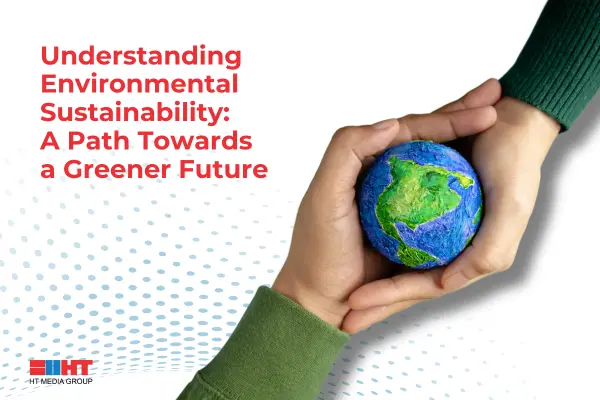





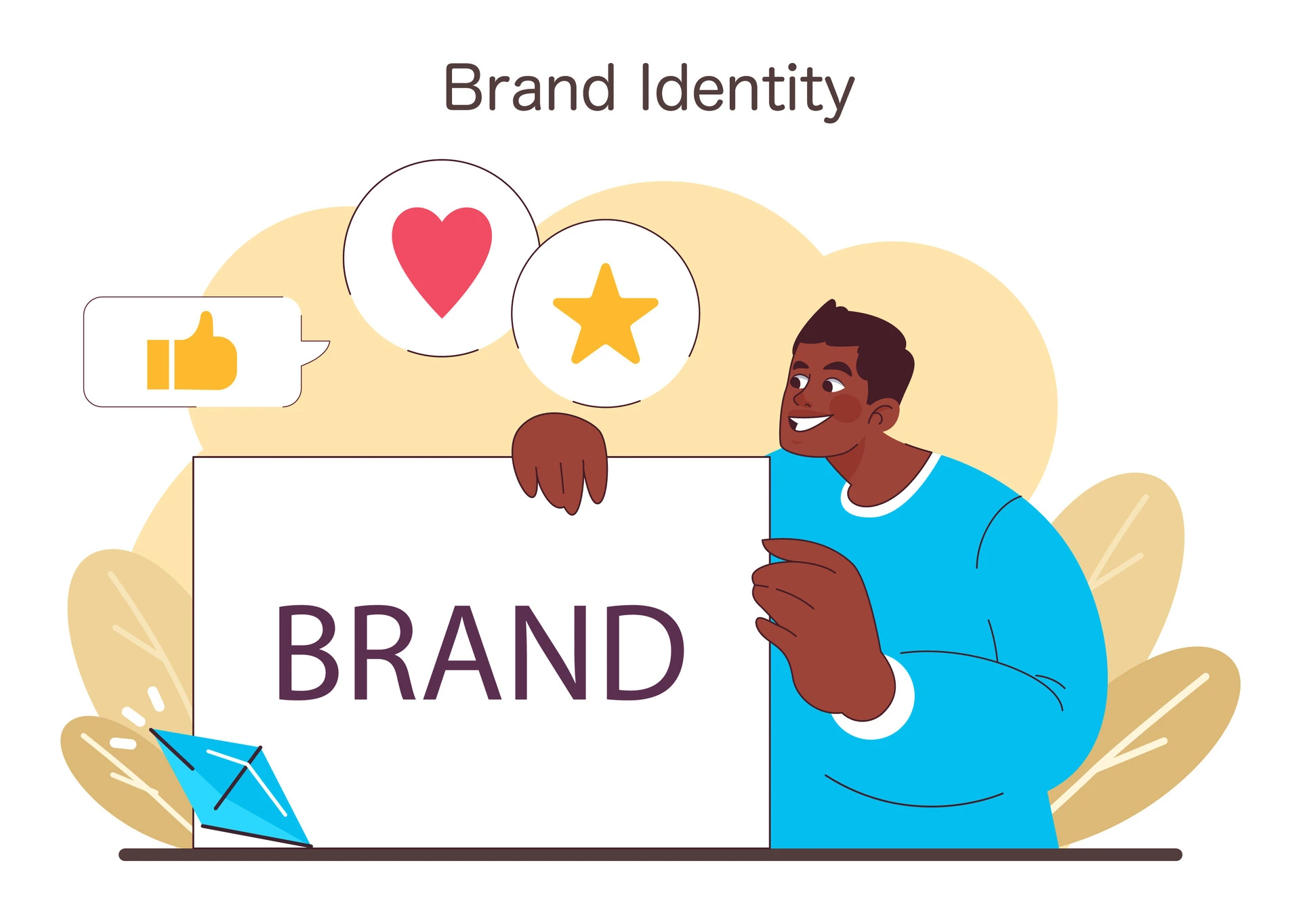


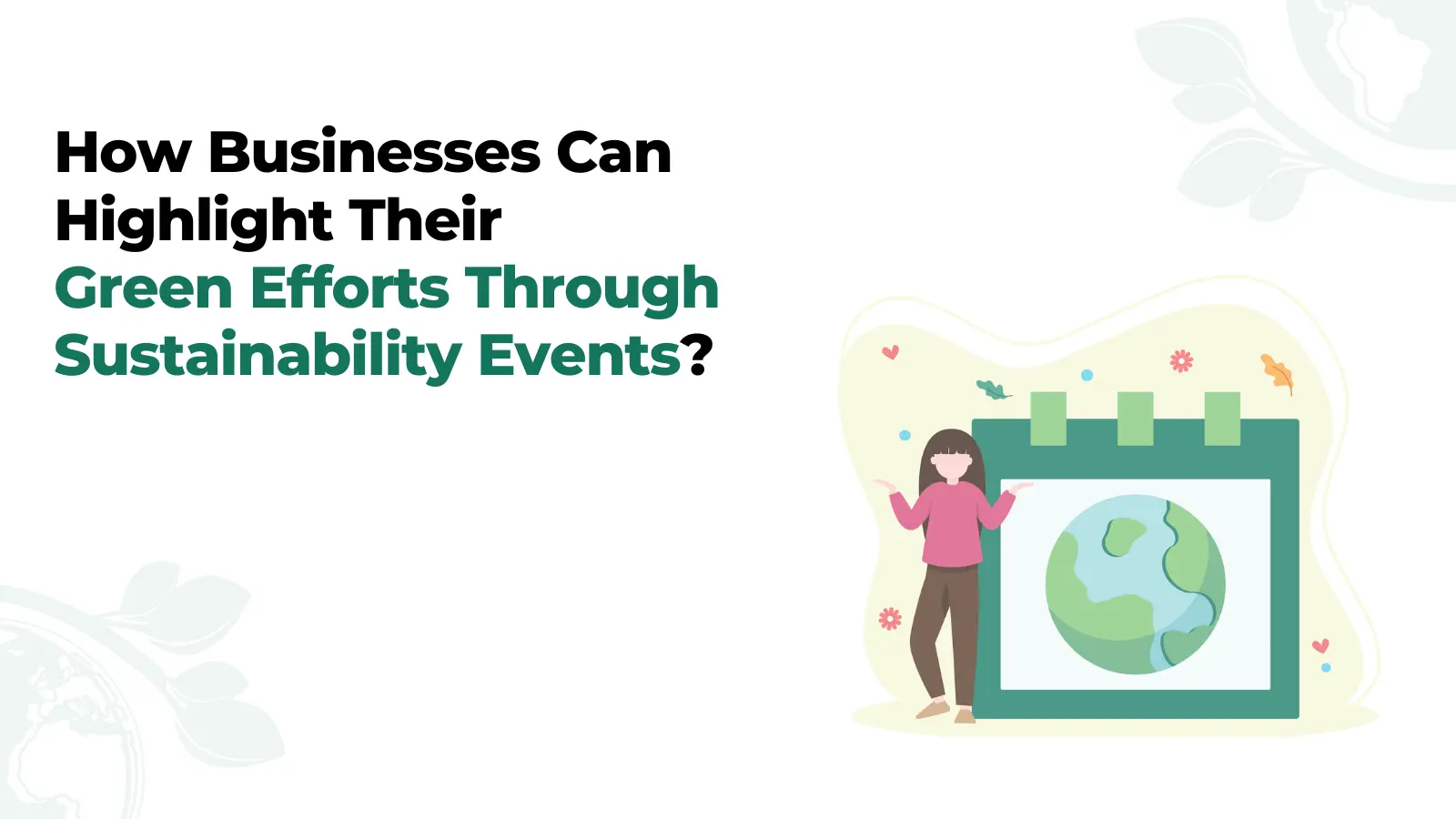





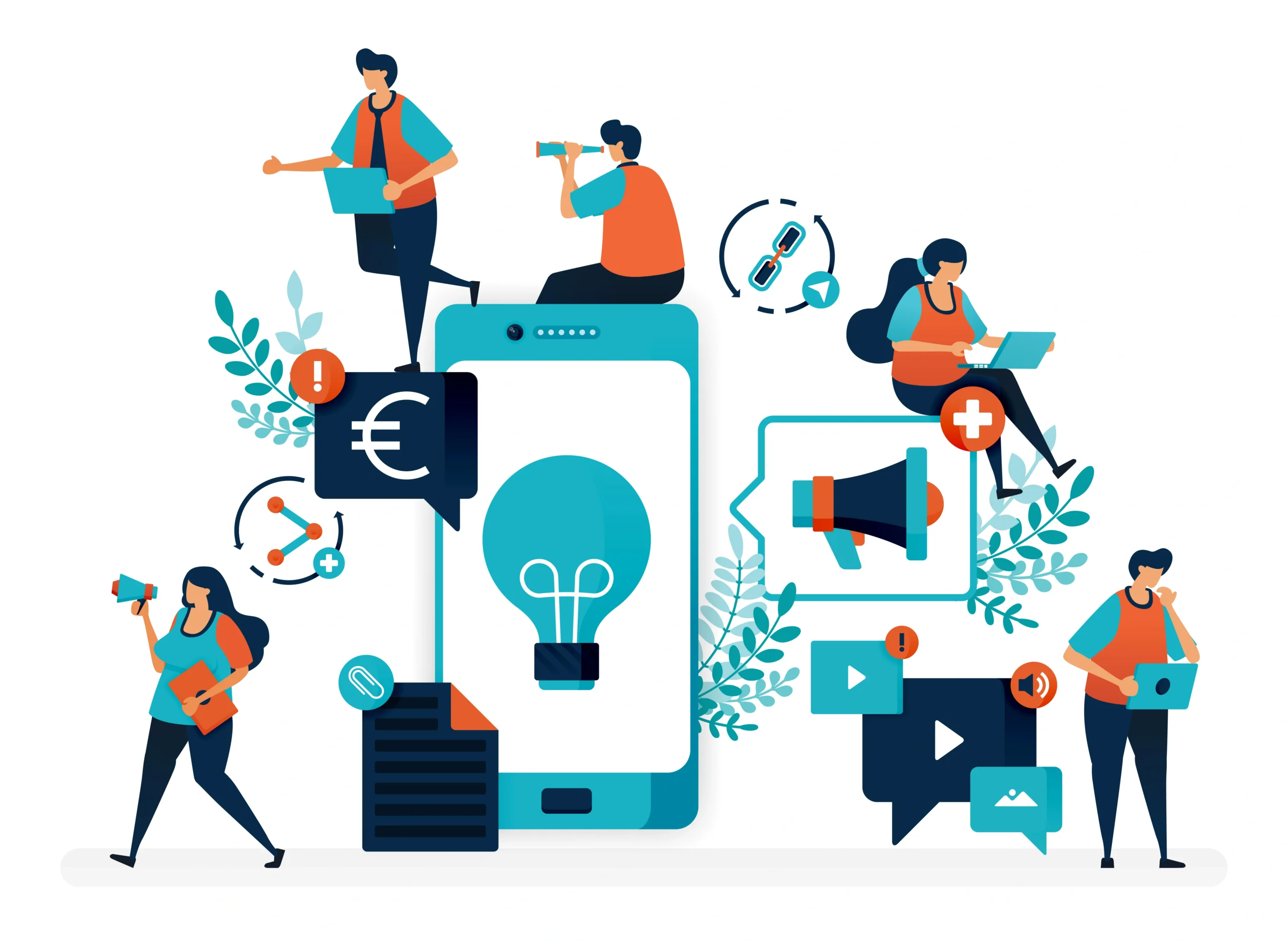

Comment